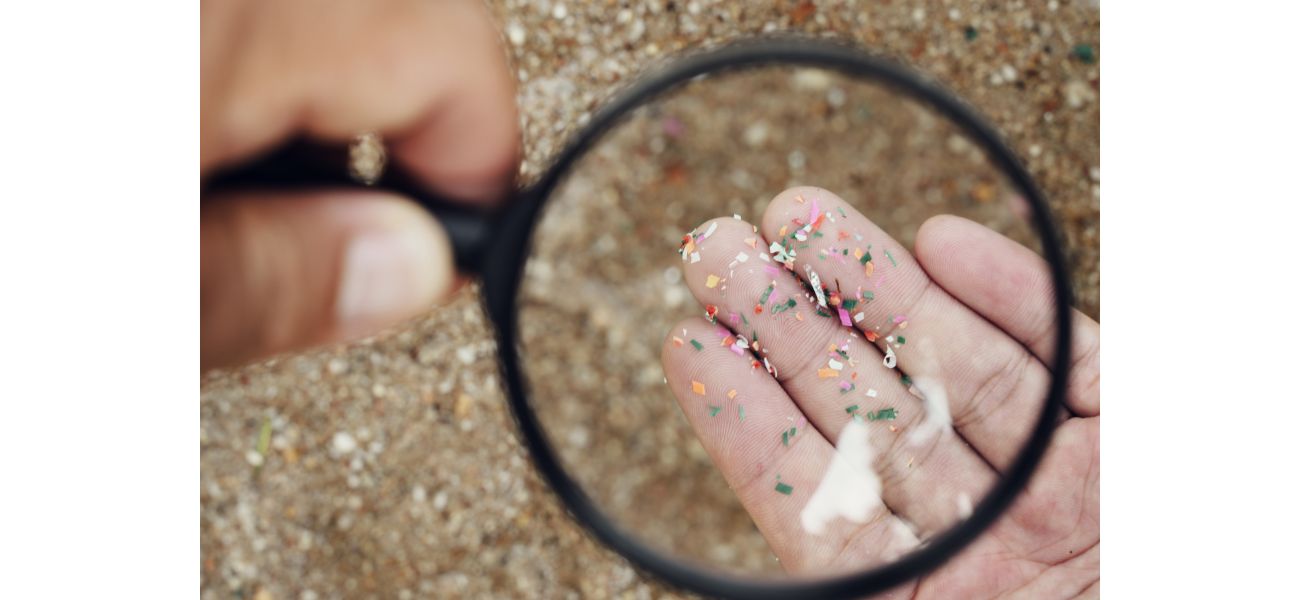Concerns arise as microplastics are discovered in the urinary systems of cancer patients.
Tiny plastic particles found in most kidney and bladder patients, including over two-thirds with bladder cancer.
September 27th 2024.

Recent studies have shown that microplastics, tiny pieces of plastic that are less than five millimeters in size, have been found in the urinary tracts of a majority of patients with kidney and bladder issues. In fact, the Bond University team discovered that more than two-thirds of patients with bladder cancer had these contaminants in their urine samples, as well as in over half of their kidney samples.
It's concerning that even those with a serious diagnosis like bladder cancer are not immune to the presence of microplastics. The study revealed that 68 percent of bladder cancer patients had either microplastics or even smaller particles called nanoplastics in their samples. These nanoplastics are so small that they can make their way through digestive tissues and into the bloodstream, posing a potential threat to overall health.
While the researchers at Bond University were careful not to make a direct link between microplastics and cancer, they did find evidence that these plastic particles can cause harm to human urinary tract cells. This can lead to toxicity and inflammation, ultimately reducing the survival of these cells. In light of these findings, the team challenged the World Health Organization's statement that microplastics do not pose a risk to public health.
This study adds to the growing concern over microplastics and their impact on human health. In a previous Italian study, microplastics were found in the clogged arteries of more than half of heart disease patients. The study concluded that these particles could double a person's risk of heart attack, stroke, and death.
The research conducted by Bond University was a compilation of 18 previous studies from various countries, including the US, China, Germany, Italy, the Netherlands, Pakistan, and Taiwan. The team, led by PhD candidate Liam O'Callaghan, emphasized that it's nearly impossible to avoid microplastics. These particles can be found in our food, water, and even the air we breathe. They can also be absorbed through the skin.
O'Callaghan further explained that heating up plastic containers can release millions of tiny microplastics into our food. Even filtering our water may not be enough to protect us, as the filters themselves are often made of plastic and can degrade over time. He pointed out that even something as seemingly harmless as a tea bag is coated in plastic, releasing billions of particles into our tea when exposed to hot water.
The production of plastic continues to increase each year, with an estimated 368 million tonnes produced in 2019 and expected to double by 2039. This has led to a significant amount of plastic pollution in the environment, including our water sources. In fact, one liter of bottled water has been found to contain an average of 240,000 plastic particles from seven different types of plastics. A 2018 study even detected micro- and nanoplastics in 93 percent of bottled water samples from 11 brands in nine countries.
Meanwhile, urinary tract infections are estimated to affect 404.61 million people worldwide, resulting in over 236,000 deaths in 2019 alone. The new study, published in the Journal of Exposure Science & Environmental Epidemiology, is the first to summarize research on the presence and effects of microplastics in the human urinary tract. These findings highlight the urgent need for more research and action to address the growing issue of microplastic pollution and its potential impact on human health.
It's concerning that even those with a serious diagnosis like bladder cancer are not immune to the presence of microplastics. The study revealed that 68 percent of bladder cancer patients had either microplastics or even smaller particles called nanoplastics in their samples. These nanoplastics are so small that they can make their way through digestive tissues and into the bloodstream, posing a potential threat to overall health.
While the researchers at Bond University were careful not to make a direct link between microplastics and cancer, they did find evidence that these plastic particles can cause harm to human urinary tract cells. This can lead to toxicity and inflammation, ultimately reducing the survival of these cells. In light of these findings, the team challenged the World Health Organization's statement that microplastics do not pose a risk to public health.
This study adds to the growing concern over microplastics and their impact on human health. In a previous Italian study, microplastics were found in the clogged arteries of more than half of heart disease patients. The study concluded that these particles could double a person's risk of heart attack, stroke, and death.
The research conducted by Bond University was a compilation of 18 previous studies from various countries, including the US, China, Germany, Italy, the Netherlands, Pakistan, and Taiwan. The team, led by PhD candidate Liam O'Callaghan, emphasized that it's nearly impossible to avoid microplastics. These particles can be found in our food, water, and even the air we breathe. They can also be absorbed through the skin.
O'Callaghan further explained that heating up plastic containers can release millions of tiny microplastics into our food. Even filtering our water may not be enough to protect us, as the filters themselves are often made of plastic and can degrade over time. He pointed out that even something as seemingly harmless as a tea bag is coated in plastic, releasing billions of particles into our tea when exposed to hot water.
The production of plastic continues to increase each year, with an estimated 368 million tonnes produced in 2019 and expected to double by 2039. This has led to a significant amount of plastic pollution in the environment, including our water sources. In fact, one liter of bottled water has been found to contain an average of 240,000 plastic particles from seven different types of plastics. A 2018 study even detected micro- and nanoplastics in 93 percent of bottled water samples from 11 brands in nine countries.
Meanwhile, urinary tract infections are estimated to affect 404.61 million people worldwide, resulting in over 236,000 deaths in 2019 alone. The new study, published in the Journal of Exposure Science & Environmental Epidemiology, is the first to summarize research on the presence and effects of microplastics in the human urinary tract. These findings highlight the urgent need for more research and action to address the growing issue of microplastic pollution and its potential impact on human health.
[This article has been trending online recently and has been generated with AI. Your feed is customized.]
[Generative AI is experimental.]
0
0
Submit Comment





